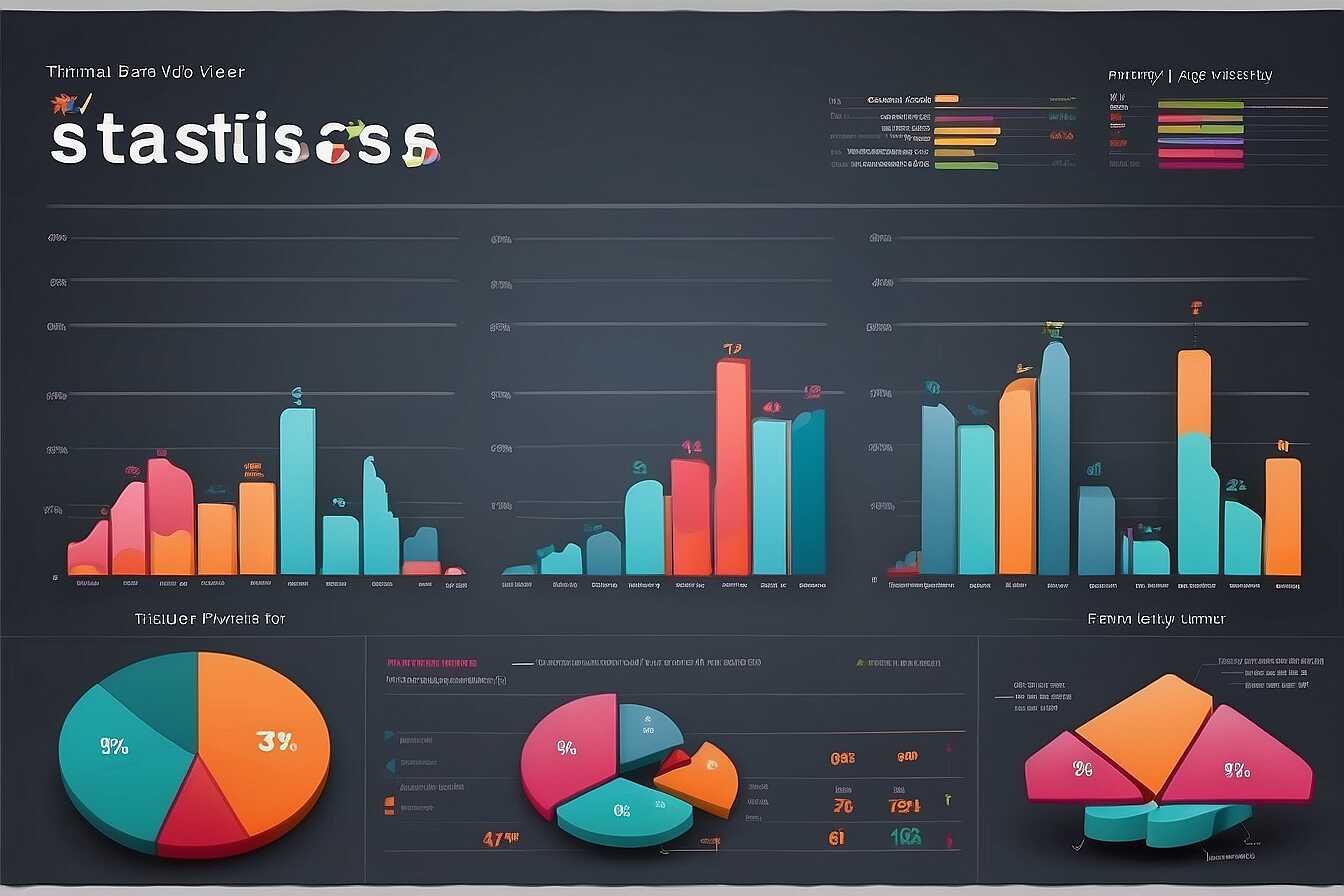Effective meta description best practices can significantly boost your click-through rates, enhancing your website’s SEO performance. These short but impactful snippets serve as a preview of your content, helping potential visitors decide whether to click on your link. By implementing proven strategies from Metrics Rule, you can craft compelling meta descriptions that attract more traffic and improve engagement with your online content. Let’s explore actionable insights that will elevate your SEO game and drive results for your business.
Understanding the Critical Role of Meta Descriptions in SEO
Meta descriptions are vital for SEO because they summarize the web page content. This summary appears under the page title in search results, impacting click-through rates significantly. An effective meta description encourages users to click by providing a concise overview. For instance, studies demonstrate that compelling descriptions can boost clicks by up to 5-15%. By integrating essential keywords, they also enhance user behavior and improve search visibility.
Elements of an Effective Meta Description
An effective meta description should include relevant keywords, a clear call to action, and intriguing information. Utilizing keywords informs both users and search engines about the page content. A well-crafted call to action prompts users to take immediate steps, like “Learn more” or “Get started today.” Including useful data, such as offers or insights, can further improve user engagement. Metrics Rule emphasizes the importance of crafting unique descriptions for each page to maximize their effectiveness in SEO.
Essential Elements of a High-Impact Meta Description
A high-impact meta description includes compelling words and phrases that capture attention. Using phrases that evoke curiosity or urgency can enhance engagement. Additionally, emotional appeal in your meta descriptions influences click-through rates across various industries. For instance, terms that evoke feelings of trust and excitement tend to perform well. It’s crucial to maintain an optimal length of between 150 to 160 characters to ensure your meta description displays fully in search results, making it easily readable while providing essential information.
Building Emotional Connections Through Word Choices
To build emotional connections, consider using power words that resonate with your target audience. Words like “discover,” “unleash,” and “transform” can evoke strong feelings, encouraging users to click. Tailoring your meta descriptions to speak directly to users’ needs can significantly improve SEO performance. This approach not only enhances user engagement but also increases the likelihood of conversions. For example, addressing pain points and offering solutions in your meta descriptions can lead to better performance, ensuring your content stands out in search engine results pages (SERPs).

Strategically Incorporating Keywords in Meta Descriptions
To effectively integrate keywords in meta descriptions, start by placing the primary keyword within the first 30 characters. This ensures visibility in search results and helps search engines understand the main topic of your page. Additionally, incorporate secondary keywords naturally, focusing on readability and user intent. Aim for a total length of 150-160 characters, ensuring you stay within the ideal character limit for effective SEO. When you balance keyword usage with engaging language, you create a meta description that enhances click-through rates and improves SEO performance.
Understanding Industry-Specific Keyword Strategies
Different industries employ unique keyword strategies within their meta descriptions. For instance, e-commerce sites often include product-specific keywords to drive conversions, while blogs may use broader terms to attract a wider audience. Service providers might focus on location-based keywords, like “Vancouver SEO,” to capture local search traffic. By researching keyword trends and analyzing competitors’ meta descriptions, professionals can optimize their approach to keyword integration. Utilizing AI tools for keyword research can also refine their strategies, increasing the effectiveness of their SEO efforts.
Numerical Insights on Descriptions for Search Results
- 70% of search result clicks happen on the first page.
- Meta descriptions can increase click-through rates by 5-15%.
- 160 characters is the optimal length for meta descriptions.
- Brief and concise summaries lead to higher user engagement.
- Over 50% of users ignore results without descriptions.
- Using a call to action improves click-through rates by 10% or more.
- Descriptive text loaded with keywords attracts more organic traffic.

Crafting Engaging Meta Descriptions That Attract Clicks
To craft an engaging meta description, focus on clarity, relevance, and persuasion. Start with a compelling hook that highlights the uniqueness of your content. Include primary keywords for SEO, while ensuring the message appeals to your target audience’s needs. Tailor it to specific industries, using terminology that resonates with users. The optimal character limit for a meta description lies between 150-160 characters, allowing enough room for your message while ensuring it displays fully in search results. This concise format helps enhance click-through rates, making it easier to attract traffic.
Enhancing Click-Through Rates with Tailored Content
To effectively enhance click-through rates, employ industry-specific targeting in your meta descriptions. For example, an e-commerce site should include phrases that highlight special offers, quality, or online exclusives. Conversely, a local service provider in Vancouver might emphasize reliability and prompt service. Clearly outlining benefits, such as ‘free shipping’ or ’24/7 support’, can significantly improve user engagement. Testing different variations is essential; analyze performance metrics to see which descriptions resonate most. By continually refining your approach based on proven data, you can create meta descriptions that not only entice clicks but also inspire conversion.

Understanding Character Limits for Meta Descriptions
Meta descriptions should ideally be between 150 to 160 characters. This range optimally displays descriptions without being cut off in search results. Keeping your meta description within this limit enhances visibility and increases click-through rates. Search engines like Google often display about 155 characters, so exceeding this can lead to important information being lost. Why does the character limit matter? It ensures your content remains concise, compelling, and directly addresses user queries, which can significantly boost your SEO performance.
Optimizing Meta Descriptions for Search Engines
To optimize meta descriptions effectively, focus on clarity and include relevant keywords. Use up to 160 characters that concisely summarize the content of the web page. This includes impactful phrases that resonate with search queries, improving results in both Google and Bing. Aim to express the unique value of your content so that users understand why they should choose your link over others. Great meta descriptions act as a powerful marketing tool that explains your page’s purpose, enhancing engagement and boosting click-through rates for better overall SEO performance. Metrics Rule has proven that when descriptions are well-crafted, they significantly improve engagement metrics.
Advantages of Optimizing Snippets for User Engagement
- Higher click-through rates lead to improved page rankings.
- Effective descriptions can boost conversion rates significantly.
- Detailed summaries help users understand content better.
- Clear and inviting descriptions create trust with users.
- Well-structured snippets enhance visibility on search engines.
- Using unique descriptions reduces competition with similar pages.
- Enhanced user experience leads to repeat visits.

Implementing A/B Testing for Meta Description Optimization
A/B testing your meta descriptions provides valuable insights into what drives higher click-through rates. Benefits include increased reliability of results, enabling you to compare different versions of your descriptions. By analyzing the test results, you can identify which language, length, and call-to-action resonate best with your audience. Successful A/B testing can lead to a proven increase in your site’s visibility and engagement, helping to enhance your SEO performance in Vancouver.
A/B Testing Methodology for Meta Descriptions
A/B testing methodology involves dividing your audience randomly and presenting them with different versions of a meta description. This process allows for accurate comparison of engagement rates. To achieve reliable results, it’s essential to test one variable at a time, such as wording or length. After running the tests for a sufficient duration—ideally achieving statistical significance—you can analyze click-through rates and determine which version delivered better results. By consistently implementing proven optimization techniques, you can enhance your site’s overall performance.
Incorporating Strong Call-to-Actions in Meta Descriptions
Compelling calls to action (CTAs) in meta descriptions significantly enhance click-through rates. For instance, phrases like “Discover more,” “Get your free trial today,” or “Shop now!” create urgency and motivate users to click. Research indicates that CTAs can improve click-through rates by as much as 30%. These actionable insights directly guide users to take the desired action, leading to increased traffic and better SEO performance. Incorporating engaging language fosters reliability and establishes a connection with your audience, making them more likely to engage with your content.
Creating Effective CTAs for Different Audiences
When designing strong calls to action, consider the specific audience you are targeting. For instance, if your audience includes ecommerce shoppers, using terms like “Shop the latest deals now!” resonates well. In contrast, a business audience may respond better to professional language, such as “Download your free guide today.” Testing various CTAs and comparing their results can help identify what works best for your potential customers. Remember that effective CTAs should not only be persuasive but also align with your overall SEO strategy, enhancing both engagement and indexing for better online visibility.
Competing Platforms and Their Approach to Meta Snippets
- Google tends to favor well-integrated meta descriptions.
- Bing offers more flexibility in keyword usage in descriptions.
- Yahoo prioritizes user intent and relevance in summaries.
- DuckDuckGo emphasizes privacy, so clear descriptions are key.
- Social media platforms often use descriptions to boost engagement.
- E-commerce sites need compelling descriptions for higher sales.
- Local businesses benefit from specific, location-targeted summaries.
Best Practices for Maintaining and Updating Meta Descriptions
Regularly reviewing and refreshing meta descriptions is crucial for ensuring that your content remains relevant and effective. Meta descriptions serve as a concise summary of your webpage, enticing users to click on your link. A well-crafted meta description can significantly enhance your SEO performance by improving click-through rates. The importance lies in keeping this information up-to-date and aligned with search intent, ensuring reliability and effectiveness over time. To maintain effective meta descriptions, implement strategies like conducting periodic reviews, testing new versions, and adapting to changes in user behavior. Businesses should aim to refresh their meta descriptions at least every six months to remain competitive, especially as trends and keywords evolve. By emphasizing content relevance, these updates can help you keep your audience engaged and enhance your overall SEO strategies.
Effective Strategies for Refreshing Meta Descriptions
To ensure the effectiveness of your meta descriptions over time, consider implementing several effective strategies. One approach is to analyze the performance data for existing meta descriptions, paying attention to click-through rates and user engagement. A/B testing different variations can provide insights into which phrases or calls to action resonate most with your audience. Additionally, consider tailoring meta descriptions for the specific types of content you produce, whether they are blog posts, product pages, or service offerings. By regularly updating based on performance metrics and user feedback, you can maintain content relevance and enhance your site’s SEO performance. Remember, effective and unique meta descriptions directly impact how users perceive your page in search results, making them a critical component of your overall digital marketing strategy.
